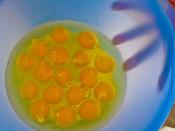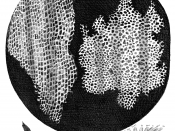By early 1800s, the accepted idea was that plants and animals were composed of globules called cells. Robert Brown enhanced this idea by describing the nuclei in cells of orchid plants.
In 1838, a German botanist, Matthias Schleiden suggested that cells were the basic structural unit of all plant matter. German zoologist, Theodor Schwann proposed that animals were made up of cells. The two biologists came to recognise that both plant and animal tissues have a cellular organization.
This basic idea of Schleidan and Schwann was published in 1839 and is known as the Cell Theory:
- Cells are the smallest units of life
- All living things are made of cells
A German doctor, Rudolf Virchow added to the understanding of cells by providing a new answer to the question: How are living things produced? Past answers included spontaneous generation, the idea that living things arose from non-living or dead matter.
Virchow challenged these old ideas with his concept of biogenesis (bio=life; genesis=origin, creation). He proposed that new cells came from pre-existing cells, which was contributed into the Cell Theory.
In1862, French biologist, Louis Pasteur carried out an experiment that disproved the old idea of spontaneous generation. His experiment involved swan-necked flasks, open to air. It was then heated and cooled slowly. The swan-necks kept new micro-organisms from falling into the nutrient medium in the flasks, thus having no new growth ever appearing. Hence supporting the view that cells are produced from pre-existing cells.


